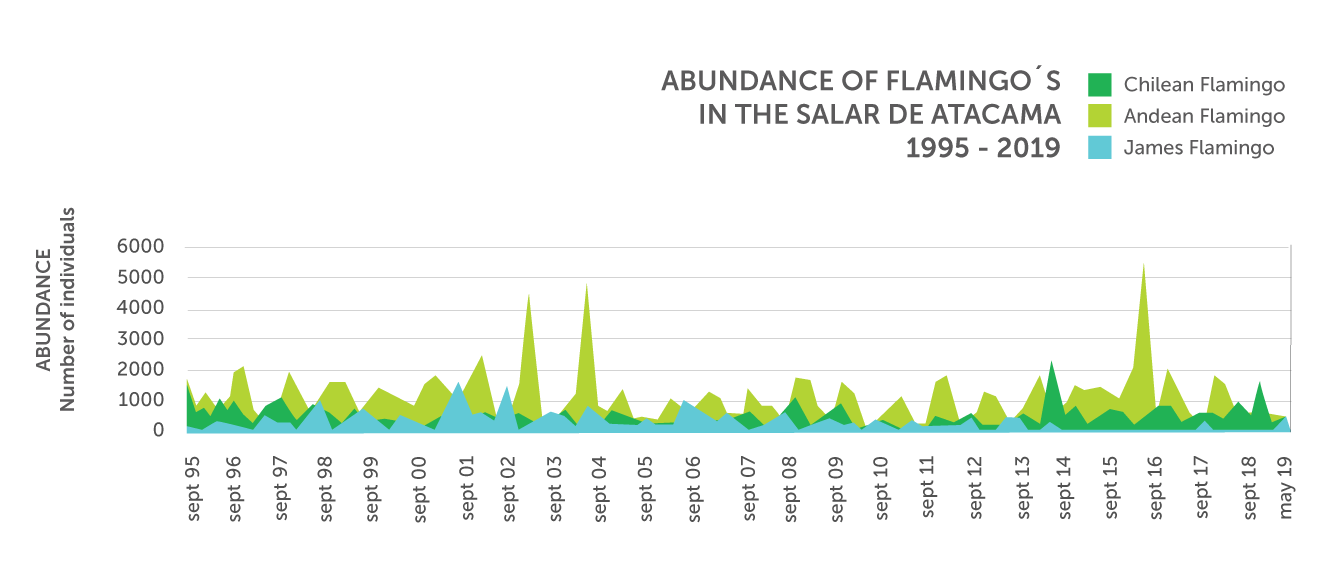Protection of flamingos
SQM operates in a region, that of Antofagasta, where the Los Flamencos National Reserve was created in 1990, divided into different sectors located within the municipality of San Pedro de Atacama.
There are three types of wild flamingos in the area: the Andean, which is classified as “vulnerable”, the Chilean and the James.
Due to their natural characteristics, flamingos are migratory birds that move, depending on their needs, between Chile, Bolivia, Argentina and Peru.
The information collected by SQM and the state National Forest Corporation (CONAF) shows that the population of flamingos has not decreased in the sectors where SQM operates.
Monitoring program and CONAF
Since 1995, the SQM company has participated in an environmental monitoring program as part of a collaborative agreement with the National Forest Corporation (CONAF). This program, which is carried out in the months of January, April, June and October of each year, aims to detect timely changes in the surface and depth of lakes, bird populations, the supply of food for flamingos, local physical and chemical conditions and human activities, among other variables.
As a result of this monitoring program, the company has collected 20 years of data on flamingo populations in the Salar de Atacama and has contributed to the activities carried out by CONAF, including an annual flamingo census in approximately 52 high Andean wetlands in the north of Chile and the Antofagasta Region, for more than 20 years.
The SQM company has been voluntarily monitoring the reproductive cycle of flamingos since 2007, observing the three flamingo species in the area: Andean, Chilean and James.
The charts show the censuses for January and April 2019.
It is important to note that during the summer of 2020 the census was carried out, but the rains began and monitoring could not be completed until February. This event, considering its great magnitude, clearly affected the presence of the birds. On the other hand, in April it can be seen that there was an increase, the abundance being relatively similar to the years 2017 and 2018.


